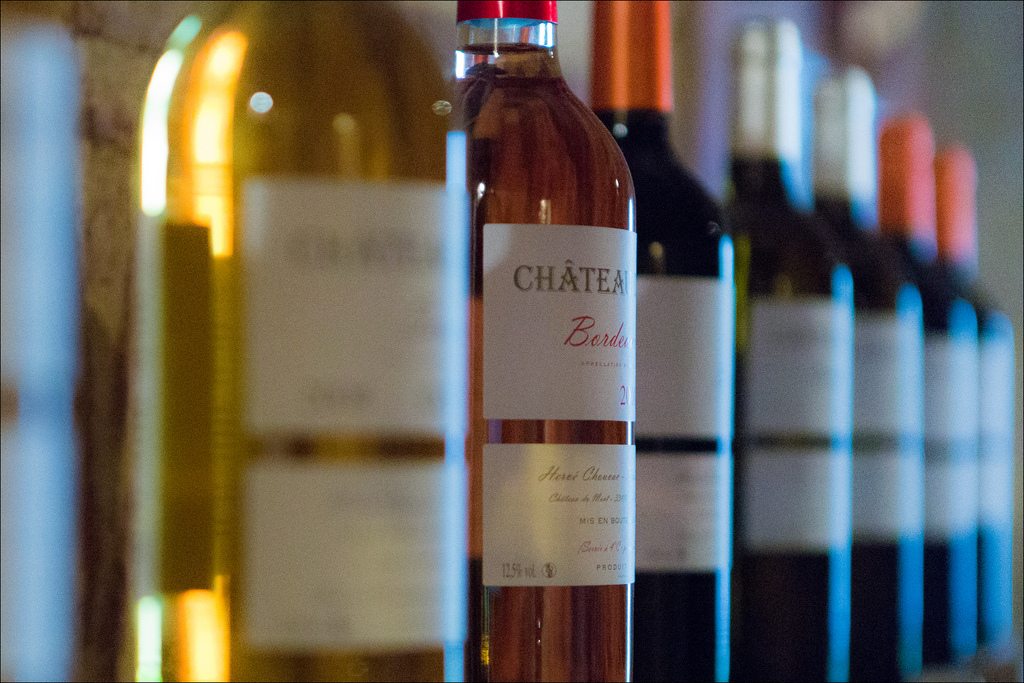
How much alcohol is consumed at a wedding reception depends on a number of factors. You know your guests, and you what and how much they like to drink. Do they love their Scotch on the rocks, or are they wine and beer people? For most weddings, the crowd is multi-generational, which generally results in a range of alcohol preferences. One of the best ways to determine how much to purchase is the time of day the reception is being held. Much less alcohol will be consumed at a morning reception as opposed a late afternoon or evening event.
Generally, you will have a few attendants who will not drink alcohol, so it’s safe to estimate that guests will consume one drink per person per hour, or about five drinks over the course of the night. Since your guests will probably be driving home after the event, it’s best that the drinking not exceed the one-per-hour rate.
How Many Drinks Are in Each Bottle?
While this depends on the size of the glasses, there are definitely a few standards:
- A bottle of Champagne equals six glasses (eight if flutes are narrow)
- A bottle of wine equals 5 glasses
- A 1 liter bottle of liquor equals about 18 drinks
How Many Bottles Are in a Case?
- A case of wine equals 12 bottles.
- A case of beer equals 24 bottles or cans.
So What Makes Up a Full Bar?
Going for a full bar? Check out an estimate of what you’ll need per 100 guests:
| Standard Contents of a Full Bar | Suggested Quantities For Your Order (per 100 guests) | |
| Beer | 2 cases | |
| White wine | 1.5 cases | |
| Red wine | 1 case | |
| Champagne | 1.5 cases | |
| Vodka | 6 liters | |
| Gin | 3 liters | |
| Sweet vermouth | 2 bottles | |
| Dry vermouth | 2 bottles | |
| Scotch | 3 liters | |
| Bourbon | 2 liters | |
| Whiskey | 2 liters | |
| Rum | 2 liters | |
| Tequila | 1 liter |
Specialty liqueurs such as cognacs and aperitifs are a luxury at any wedding, and generally add to the bar bill by a lot. Keep in mind that if these drinks are not on display at the bar, very few people will inquire about them.
How Can I Save Money?
The amount you pay for the alcohol at your reception depends on your chosen location, and the arrangements made with management.
| Hotels, Clubs and Restaurants |
| Most places used to hosting wedding receptions will offer the standard bar content similar to the above list, including several different wine and beer options. If you want to serve specific wines or Champagne, talk to the establishment about specialty orders, and expect an fee. You can also bring your own cases of wine, however they will generally charge you a corkage fee per bottle. Keep in mind the corkage fee can add significantly to your bill. Tell management that about half way through the reception, the groom or a groomsman will want to check on the amount that has been served. This will help you gauge consumption and let management know that someone’s keeping track of everything. |
| Independent Locations |
| If the reception is taking place at an independent location such as a home or hall without restaurant and bar facilities, your alcohol costs will probably be a lot lower. You’ll get to hunt for a bargain or work something out with the owner of your favorite liquor or wine store. A substantial discount for buying in bulk is also likely. |
What Brands Are Best?
When stocking the bar, think about the brands most likely to satisfy the largest number of guests. Again, you know your guests. If your family is flying in from the highlands of Scotland, you may want to go for a single malt over a Kentucky bourbon, but generally, standard bar fare will work. On the wine front, you can definitely make choices based on your personal preferences.
Keep the Budget in Mind When Choosing Wine
Choosing wine is often a fun part of the wedding planning process. Find several bottles in your price range, have a few friends over and host a wine tasting. Once you’ve made your choices, talk to your local wine store owner about a deal for buying in bulk. If they don’t have the wine you like, they can order it for you usually within a few of weeks.
Tips
The year 1995 was a wonderful year worldwide for wines, both white and red. In terms of moderate price ranges, you are likely to find a tasty wine if it was produced in that banner year. Ask your wine seller for a few recommendations if needed. In the meantime, here are a few varieties available at very reasonable prices:
Red Wines
- Buena Vista, 1995 Cabernet Sauvignon – California. Full bodied.
- Rosemount Estate, Shiraz – Australia. Peppery, spicy and dry.
- Bridgeview, 1994 Reserve Pinot Noir – Oregon. Smooth and light.
- Col-di-Sasso 1996 Sangiovese/Cabernet blend – California. Full and dry.
White Wines
- Dry Creek Chardonnay – California. Crisp and dry.
- Meridian 1997 Gewürztraminer – California. Luscious and sweet.
- Sokol Blosser 1998 White Riesling – Oregon. Light and fruity.
- Three Chardonnay values offered in the 1.5 liter size
- Napa Ridge
- Summit
- Robert Mondavi Woodbridge
Champagnes
- Paul Cheneau Blanc de Blancs Brut
- Korbel Brut
Cheers!






